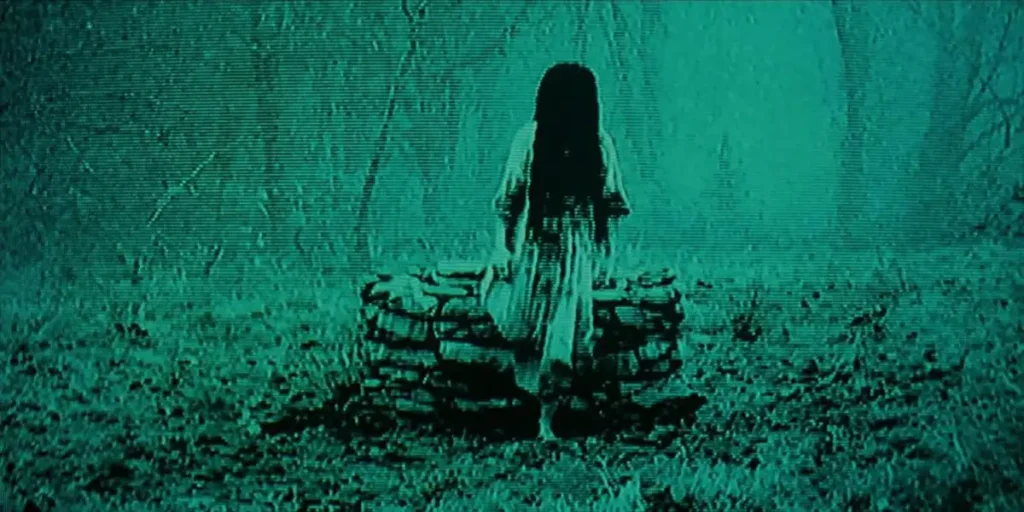Join us as we recap our experience rewatching The Ring seven times in seven days and diving into the J-horror remake craze.
Growing up, I always hated horror movies.
Maybe it’s because when I was four years-old I accidentally saw my family watching the episode “Hush” from Buffy the Vampire Slayer and subsequently didn’t sleep for a week, but as a kid I refused to watch anything scarier than an episode of Scooby-Doo. As a result, a lot of the now-classic horror films of the 2000s and early 2010s passed me by; it wasn’t until my late teens and early twenties when I finally got over my scaredy-cat tendencies and caught up to what I had missed.
One of the first films that I crossed off the list was 2002’s The Ring, a Hollywood remake of the 1998 J-horror film Ringu. This film had quite the reputation amongst my fellow middle-schoolers; kids would say things like, “It’s the scariest movie I’ve ever seen,” or “We watched it at a sleepover and none of us could fall asleep that night.” Much like the teenage characters within The Ring itself, they spoke of the film in hushed tones as if it were this illicit, dangerous artifact that they couldn’t help but interact with.
When I finally sat down and watched The Ring in college, I thought it was pretty good, even though it didn’t live up to the “scariest movie ever” moniker. Cut to seven (!) years later, and I suddenly found myself itching to watch The Ring once more. Why, I can’t say for sure. Maybe the film itself was calling out to me from the depths of my watchlist. Whatever the reason, I knew I didn’t want to just rewatch it once and call it a day. No, I had a plan that was far more unhinged.
So, in honor of The Ring’s 22nd anniversary, I decided to watch the film seven times in seven days and see what would happen. Would I slowly lose my mind? Would ghostly Samara herself come out of my TV during the seventh viewing and put an end to my misery? Keep reading to find out.
Also, spoilers below for The Ring, obviously.
Day #1
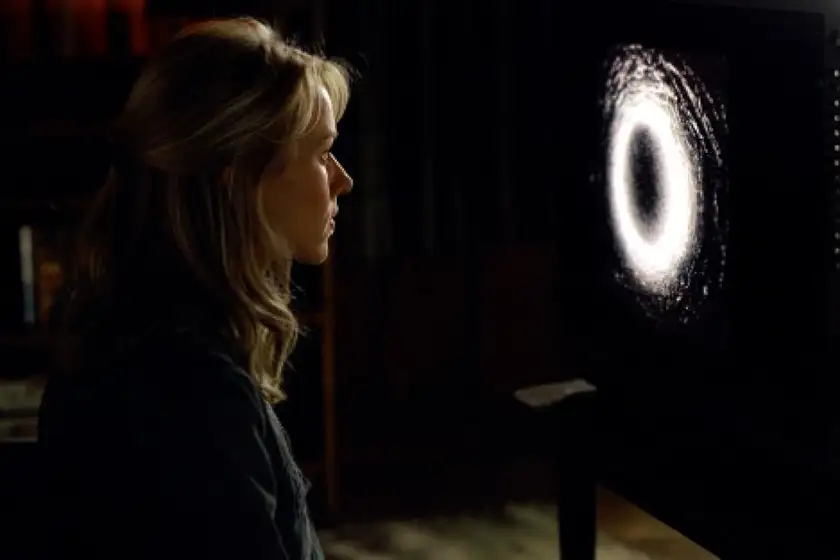
The Ring follows reporter Rachel Keller (Naomi Watts) as she tries to solve the mystery of a cursed VHS tape that kills the watcher seven days after they’ve seen it. She discovers that the tape was created by Samara Morgan, a little girl with psychic powers who was abandoned by her parents when they threw her down a well some twenty years earlier. Samara’s rage is projected into the form of the video tape, and killing the people who watch it is her way of taking revenge. Rachel thinks that she breaks the curse by discovering the truth about Samara’s fate, but she soon learns that Samara’s rage cannot be stopped; the only thing you can do is copy the tape, show it to someone else, and pass the curse on.
My initial assessment of The Ring as a pretty mid, straight down-the-middle early Aughts horror offering was totally wrong: this thing slaps. There were so many excellent aspects of the film that I had forgotten since my first viewing: the evocative atmosphere of its rain-soaked Washington setting, the well-paced mystery, the jump scares. I had forgotten most of the scare sequences, and there were several, like the cut to initial victim Katie’s disfigured face, that had me jumping out of my seat.
I was especially drawn in by the performances, which are far better than they have any right to be. Everyone is doing good work here, from Daveigh Chase as creepy little Samara Morgan to Brian Cox as her haunted father to even an uncredited Adam Brody as an exposition-delivering teen. But obviously the real star of the show here, both literally and qualitatively, is Naomi Watts.
Fresh off her Oscar nomination snub for Mulholland Drive, Watts turns in another award-worthy performance as Rachel Keller, a reporter who dives deep into the mystery behind the cursed VHS tape. Rachel is something all too rare – an intelligent horror protagonist – and Watts nails her increasing desperation to save herself and those she loves from the tape’s curse while never forgetting the empathy that she has for Samara, the film’s antagonist.
Not all aspects of the film have aged as well. The sickly green and blue color grading is so oppressive it makes the Underworld films look normal, (also why does every director’s first instinct when it comes to depicting the state of Washington seem to be, “Make it the bluest thing you’ve ever seen”? Looking at you, Twilight). Ehren Kruger’s dialogue can be a bit ham-fisted in places, and Rachel’s son Aiden (David Dorfman) occasionally feels like an emotionless little weirdo for the sake of playing into the “creepy kid” cliche rather than being justified from a story perspective.
These quibbles aside, The Ring still stands as an example of PG-13 horror done right. It has plenty of disturbing moments and imagery without the use of heavy gore, and its intriguing mystery brings the viewer deep into the film and rewards them for paying attention. It might not crack my top ten horror films of all time, but it definitely deserves the reputation it has amongst a certain generation of horror fans as a spooky sleepover classic.
Now I just have to watch it six more times.
Day #2
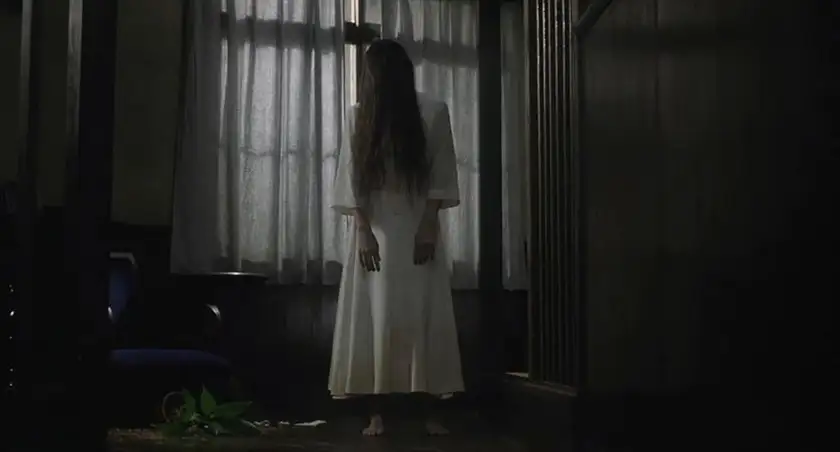
I quickly realized that watching nothing but The Ring for seven days in a row would lead to the film turning into white noise, which would defeat the purpose of this whole thing. I decided that the way to get the most out of these repeat viewings was to try to place the film into context: how did it compare not only to the original film but to the wave of similar Japanese horror remakes that followed it?
I started with Ringu, the film’s direct source of inspiration. Directed by Hideo Nakata and based on Koji Suzuki’s novel of the same name, the low-budget horror flick was a big box office hit when it debuted in Japan, becoming one of the top ten highest-grossing films of 1998. Its success kicked off a new wave of acclaimed Japanese horror (or J-horror) films that also found international success (many of which received remakes of their own, but we will get to that).
The Ring pretty much replicates Ringu beat for beat, with only a few notable changes. Both Sadako (Rie Inō) and her mother Shizuko (Masako) have psychic powers instead of just Samara like in the remake, and there’s no human antagonist who is still alive in the present day like Brian Cox’s Richard Morgan. There are smaller differences too, like the fact that the cursed video is much shorter and has fewer layers to dissect.
In comparison to the remake, the characters in Ringu feel somewhat lacking. The film doesn’t do as much with the history between Reiko (Nanako Matsushima) and Ryuji (Hiroyuki Sanada), and their son Yoichi (Rikiya Otaka) feels much more inconsequential than Aidan does in The Ring; both sons fill the same plot obligations, but Aidan’s relationship with his parents feel much more defined.
Reiko also feels less like the protagonist of the story; Ryuiji does a lot of the heavy lifting when it comes to investigating the main mystery in a way that feels like the movie is pushing Reiko aside and making her purely reactive. Ryuji’s American counterpart Noah (Martin Henderson) gets plenty of screen time as well, but in a way that feels like he’s supporting Rachel’s story rather than supplanting it.
But honestly, and maybe this is a byproduct of seeing The Ring first, Ringu just isn’t very scary. There are ominous moments to be sure, but with the exception of Kabuki performer Ino’s jerky physicality as Sadako and the extreme closeup of her eye opening right before Ryuiji’s death, there isn’t much in the way of frightening imagery that sticks with you after the credits roll. I’m not completely averse to slow-burn horror, but this film’s particular brand of it felt disappointing given its reputation.
Most of my focus on this second watch of The Ring was in finding all of the minute differences between it and the original, which was a somewhat draining experience. How many more times am I doing this?
Day #3
One line that stuck out to me on this viewing was from Jane Alexander’s Dr. Grasnik; when describing the negative effect that Samara’s presence had on Moesko Island, she says that in a small community like theirs, “If you catch a cold, it’s everyone’s cold.” When Rachel presses her on what that means, Grasnik admits that since Samara has been gone, things have been better.
The idea that it takes a village to fail a child feels central to The Ring’s narrative. Samara couldn’t control the images she conjured in the minds of those around her; as Rachel puts it, “She just wanted to be heard.” But the people of Moesko, even Samara’s own parents, refused to listen. They preferred to sweep the problem under the rug, sending Samara to an institution and eventually throwing her into the well at Shelter Mountain just to wash their hands of it.
The ending implies that Samara isn’t some misunderstood child but a manifestation of pure, unstoppable evil, but I don’t think I buy it. There are a lot of similarities on a personality level between Samara and Aidan, who is implied to have some sort of psychic connection to Samara given how frequently the two communicate. Without a loving, present parent like Rachel in his life, Aidan might’ve turned out like Samara. At the same time, if Samara had a parent like Rachel in her life, who knows how she would have turned out?
Also, I finally rewatched The Ring on my TV as opposed to my laptop, which allowed me to see the sickly color grading in its full glory, and I have to say…I actually think I like it? Yes, it aggressively leans into the 2000s “nu-metal” horror aesthetic, but I really believe it emphasizes the idea that the moral rot at the center of society that led to Samara’s death and subsequent curse is spreading like decay. Like Richard Morgan says when Rachel first questions Anna’s death, “You take one person’s tragedy and spread it like a sickness.”
So yeah, from watch one to watch three, I’ve already reversed one of my negative opinions on the film. Is this what Stockholm Syndrome is like?
Days 4 + 5
Well, it happened: the film turned into white noise. I tried not to let it happen, I really did, but before I knew it, I would throw the film on and it’d suddenly be a half hour in without me realizing it. As a result, I didn’t get much new out of these two viewings – but no matter what I was doing, the sequence where we see the cursed VHS tape for the first time had my attention rapt. Noah derisively refers to it as “very student film”, and it certainly is deliberately obtuse, but there’s an undeniable allure to those grainy images.
Even after multiple viewings, I still found myself trying to figure out exactly what I was looking at at any given moment. It took until the fifth viewing for me to realize that there were interstitial frames of the black plastic bag being pulled over Samara’s head, which adds a whole other terrifying layer to it. The tape is packed with dense and creepy imagery, and putting together the puzzle of what frames connect to certain plot points is incredibly fun. Still, I can imagine that if I saw the tape out of context of the film – like when it played during late-night TV commercial breaks in the months before The Ring’s release – I would still find myself captivated by its disturbing power.
Day #6
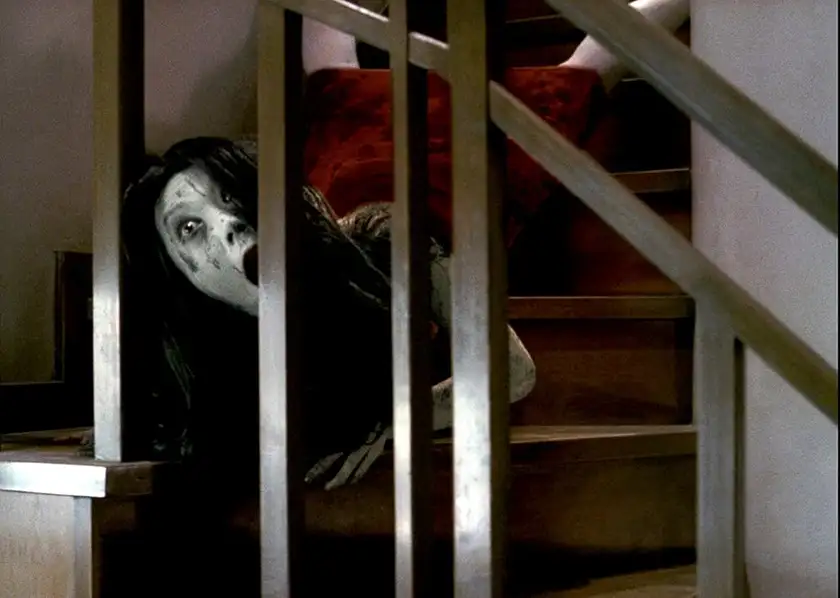
I finally entered phase 3 of my experiment, which involved watching some of the other J-horror remakes that were greenlit in the wake of The Ring’s success. Few in Hollywood probably expected a remake of a little-seen J-horror flick to gross $250 million worldwide ($437 million in 2024 dollars), but when it did, studio execs saw dollar signs.
The first of these J-horror remakes to come out post-Ring was 2004’s The Grudge directed by Takashi Shimizu, who also directed the original Ju-On: The Grudge in 2002. I deliberately didn’t watch that film (or any of the original films these remakes were based on besides Ringu) because I wanted to replicate the experience of the average American moviegoer in the Aughts; in the 2020s, Americans have finally started coming around to the idea of watching international films with subtitles, but that was definitely not the case a couple of decades ago, which is why we got all of these American versions in the first place. If the average viewer only watched the remakes, then I needed to do the same.
The Grudge made about $100 million less than The Ring, but it was still the highest-grossing horror film of 2004. I remember being at least intrigued by it because it starred Sarah Michelle Gellar, (all roads lead back to Buffy), but never got around to it. The poster alone, with a woman’s wide-eyed stare peeking out from a heavy curtain of black hair, already had me prepared for something derivative of The Ring, but I didn’t think it would be that bad.
Reader, The Grudge was that bad.
It opens with some text over a black screen delivering exposition (always a strong way to start), explaining how, “When someone dies in the grip of a powerful rage, a curse is born.” Oh, so another curse that is going to pass from person to person, just like in The Ring? Yes and no – the specifics of the curse in this movie are never clearly defined, but it is tied to an onryō – a vengeful Japanese spirit that can physically manifest and kill its victims.
“Oh, so kind of exactly like Sadako/Samara in The Ring?”
Listen, all of these movies involve vengeful spirits in some way or the other, so I can’t rag on them just on that basis. The onryō specifically have their roots in Japanese folklore and Kabuki, where they are often depicted as wronged women in white burial kimonos with long, wild hair that they cover their faces with until they choose otherwise. These are powerful spirits, and reverence for them is an important aspect of Japanese culture.
You would think that bringing back the director of the original Japanese film would help it retain some of that cultural specificity, and in some ways it does; The Grudge is notably the only one of these American remakes that still takes place in Japan. But by choosing to focus its confusing, nonlinear story on the most boring white people imaginable, it actually makes retaining the Japanese setting feel more pointless. Maybe the film is trying to make a point about foreigners who move to Japan and don’t bother to assimilate to the culture, but it never feels like the antagonist, Kayako, is attacking them for a specific reason other than, “She’s pissed!”
And look, if I were her, I would be mad about being stuck in a knockoff of The Ring as well. But even if The Grudge didn’t steal aesthetic and narrative elements from its predecessor, from the mystery storyline to its antagonist’s erratic physicality, it would still fail to stand on its own merits. The cast does not come out of this looking good; SMG barely gets anything to do, and she and her love interest, Roswell’s Jason Behr, had more chemistry in the one episode of Buffy that he guest-starred in than in this entire film. Bill Pullman is utterly wasted, as are the woefully miscast William Mapother and Clea Duvall as a couple that apparently use the term “kiddo” as a term of endearment (100% thought he was her dad for a bit there, which is never what you want!).
I hope that Shimizu is better with his actors in the original Ju-On, because his main directorial choice when it comes to calibrating the performances here is, “Make everything as low stakes as possible.” There’s a scene where Ted Raimi’s character finds the jawless ghost of one of his employees, which then kills him. Right before that happens, he dips his fingers into a puddle of blood on the floor and asks, “What’s wrong Yoko,” as calmly as if he were talking about the weather. Brother, there is blood on the floor! There is blood on your hand! Let’s show some urgency here!
At the end of the day, The Grudge is just another haunted house story full of poorly developed characters and told in a nonlinear, hyperlink cinema style that feels like 90s leftovers. There are a handful of good jump scares, but this is a case of a solid concept and cast wasted on poor execution. So of course it made a ton of money!
Returning to The Ring after watching this was like being embraced by a long-lost friend. I found myself particularly drawn in by the score this time, particularly its eerie piano motifs and propulsive violins. I was shocked to discover that it was written by Hans Zimmer, as it has very little of the bombast that he usually fills his scores with nowadays. Honestly, hot take, but I think his work here is better than his Oscar-winning score for Dune, which mostly amounts to, “How loud can I make this before I burst the audience’s eardrums?”
Day #7
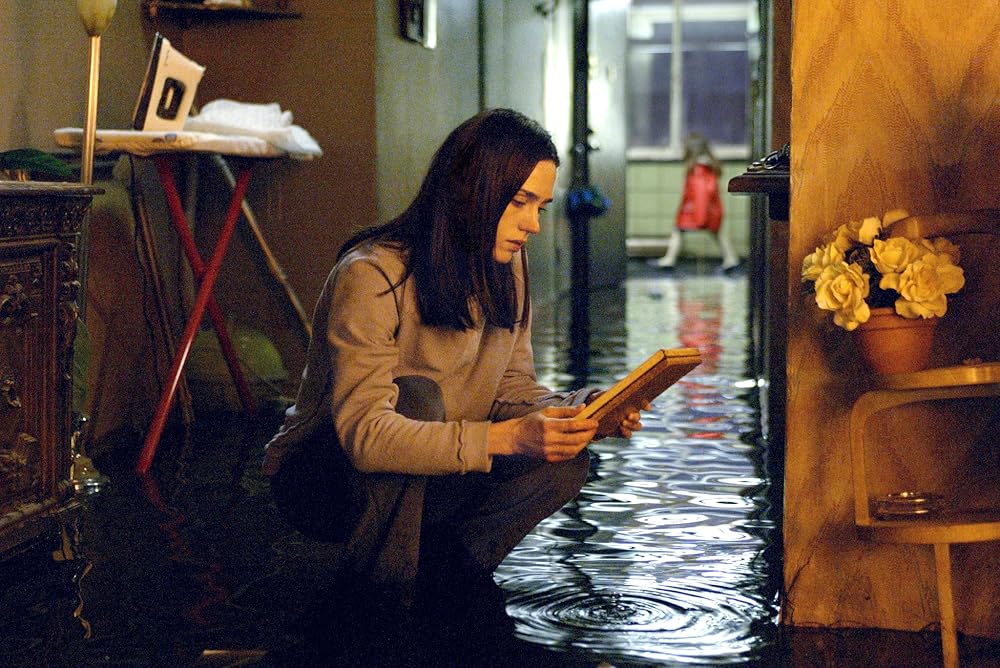
The final day did not get off to a good start. I woke up at 6 AM with a monstrous migraine; unable to fall back asleep, I obviously made the only logical choice one could make in this situation and threw on The Ring. It actually ended up being my best watch yet – but I’ll come back to that in a bit.
I knew that just watching Ringu and The Grudge would not give me enough historical context about The Ring’s place in the culture: I needed to watch a couple more prominent remakes as well. I decided to tackle 2005’s Dark Water, as the original film was also directed by Ringu’s Hideo Nakata and based on a story by Koji Suzuki, author of the Ring novel.
Directed by Walter Salles (I’m Still Here), the film stars Jennifer Connelly as a recently divorced single mom, Dahlia Williams, who moves with her daughter Cecilia (Ariel Gade) to a dingy NYC apartment that has a mysterious leak in the ceiling. Dahlia finds out that the leaks are related to a girl named Natasha (Perla Haney-Jardine) who had lived in the apartment above theirs before her parents abandoned her and she drowned in the building’s water tower. She becomes increasingly jealous of Cecilia’s relationship with Dahlia, eventually nearly drowning the girl. Dahlia agrees to be Natasha’s mother and allows the ghost girl to drown her instead, and the film ends with her telling Cecilia that she will always be with her.
It’s a good twist, although it definitely plays into Suzuki’s preference for false happy endings that actually end with the death of a main character. It also doesn’t really make up for the cliches that the film plays into up until that point, especially the whole “Natasha is just Cecilia’s imaginary friend” angle that is obviously fake to anyone with the slightest bit of media literacy.
The cast, which includes four (!) Academy Award nominees/winners including Connelly, John C. Reilly, Tim Roth and Pete Postlethwaite, feel massively overqualified for what is being asked of them here. Connelly gives a great performance as a broken woman who is trying to face her own trauma for the sake of her daughter and convince everyone around her that she isn’t losing her mind, but the role isn’t deserving of her talents.
Still, the film is interesting as a continuation of some of Suzuki’s thematic interests from Ringu; there’s the importance of water as a visual metaphor for isolation and death, as both Sadako and Natasha meet their ends while trapped in bodies of water from which there is no escape. In both films there’s a great deal of focus on parenthood, the cycles of abuse and the lengths we will and won’t go to for our children. Dahlia makes the ultimate sacrifice for the sake of both Cecilia and Natasha; it’s not too much of a stretch to say that Rachel would have done the same for Aidan and Samara.
Ultimately, Dark Water is much less of a horror film than a psychological drama with only a handful of threadbare scares. Honestly, with its prestigious cast and slow-burn style, if it came out ten years later and was distributed by A24, it probably would have been slapped with the groan-inducing label of “elevated horror”, (and made even less than the $45 million/$75 million adjusted that it made in 2005. Remember when random mid-budget movies actually made money? I digress).
I decided to end my viewing experience with the film that signified the death knell of the J-horror remake trend: 2008’s One Missed Call. One of the lucky few films to be sitting at a 0% critics’ score on Rotten Tomatoes, One Missed Call follows a group of friends who start dying one by one after receiving mysterious voicemails that play them the sounds of their own deaths. A mysterious curse being passed from person to person, you say? Never seen that in a J-horror film before!
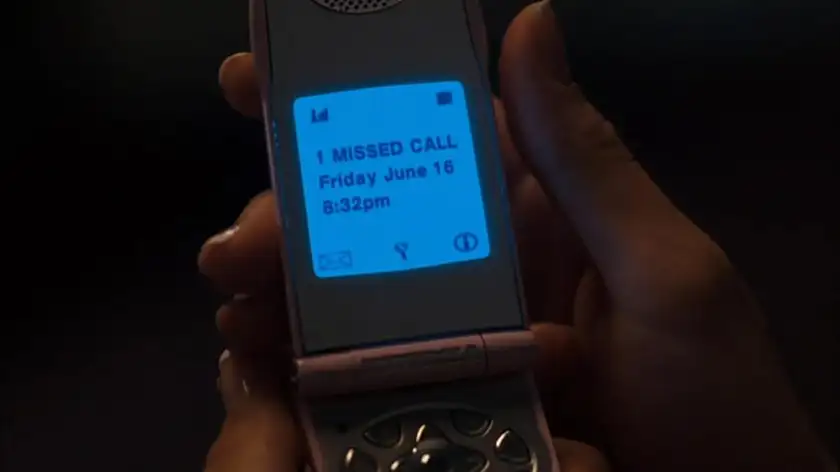
Did I expect this film to be good? No, of course not. Did I expect it to make me long for the sweet oblivion I can only imagine comes after a frontal lobe lobotomy? No, and that is on me, because this thing is a f*cking nightmare.
Imagine if you took all three of the J-horror remakes that I have already talked about and threw them in a blender with Final Destination and Scream: this is the sh*t that would be the result. This thing is utterly incomprehensible on a scene-to-scene basis. All of the characters talk like aliens, and they seem to forget their previously established relationships to one another whenever the movie feels like it. You truly have never seen a stupider group of characters in a horror movie, and that is saying something. If these people know their supposed last words before their death ahead of time, why would they say them at all? It’s not like the film implies that they have no control over themselves in those moments; they might as well be wearing a sign that says, “Come on curse, kill me!”
I could write a 150-page graduate school thesis on everything else that is wrong with this movie, but I will try to keep it brief: the performances suck, the scares are nonexistent, the CGI is offensively bad, and it blatantly steals from other, better films willy nilly. Rube Goldberg-esque Final Destination-style deaths? Well, sure, if the directors of the Final Destination movies could only come up with one single idea per death sequence. Bad CGI centipedes that have no purpose other than referencing the centipedes in The Ring? Why not! Another fake happy ending where the characters think they defeated the curse but then one of the main characters dies at the last second? Check it off the list!
One Missed Call even steals the “evil child ghost whose parents hated her” from The Ring as well, except it saps that relationship of any possible nuance and shoots its flashbacks like they’re from an episode of CSI. There’s more awfulness that I can’t even put into words; I have five separate bullet points in my notes that are just “?????”
But you know what? I am glad that I put myself through the psychological torture of watching One Missed Call, because it made me appreciate The Ring even more. By the time I got to watch #4 and 5, I was feeling pretty burnt out on the film. I was starting to approach my viewings like I was going to write an episode of CinemaSins, searching for plot holes rather than actually trying to enjoy the experience.
Maybe it was sleep deprivation, maybe it was the effects of being pumped full of migraine medication, but that early morning 7th watch almost felt like I was seeing the film with fresh eyes. I had been trying to figure out why Samara’s rage projects into the form of a video tape; why that specific manifestation?
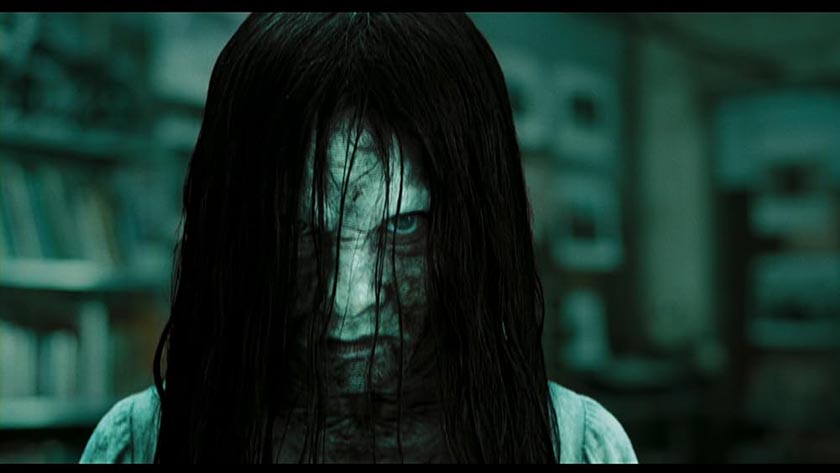
“You take one person’s tragedy and you spread it like a sickness.” Richard Morgan was right – the sickness is spreading, and it’s our own technology that will be our undoing. The VHS tape is the perfect conduit for the curse – widely available, easy to copy, innocuous. Like the owner of Shelter Mountain Inn, you might not even notice it on your own bookshelf until it is too late. Like Samara says, “It won’t stop.” The curse will live on, whether you destroy the tape or not; you can’t stop the inexorable forward march of technology. All you can do is copy it and pass it along to the next person, wash your hands of it and say, “It’s their problem now.” Technology is the curse, and one day we will all be consumed by it.
I don’t know if you could make The Ring now. The story would have to be updated due to the obsolescence of VHS, but to what? A haunted TikTok? A curse passed through email? There would be no tactility to that, no physical danger, no stakes. You have to put in the effort to copy a VHS tape, to sit someone down and show it to them. It takes no effort to copy and paste a link or forward a cursed message. It’s too impersonal. The algorithm spreads the curse, not human choice. There’s no longer a sense of humanity to the spread of ideas – but maybe that’s the point that a new version of The Ring would try to make.
Personally, I’m happy with the version we have. The Ring clearly stands as a cut above its J-horror remake counterparts because it never forgets to surround its intriguing ideas with solid scares. It expertly adapts its source materials themes of fear of technology and failing as a parent to an American setting, tapping into universal ideas in a way that its successors failed to translate. And while it did make a ton of money, it doesn’t feel like it’s chasing trends and profits in the way that its imitators did.
I’m glad that I did this little experiment; it was sometimes exhausting, sometimes annoying, but it really did give me a much deeper appreciation for one of the most acclaimed mainstream horror flicks of the Aughts. The Ring may not be the “scariest movie ever made” like middle-school me expected it to be, but it more than lives up to its reputation as an effective frightfest and one of the horror genre’s best remakes.
And I don’t want to watch it again for another seven years.
The Ring (2002) is now available to watch on digital and on demand.

